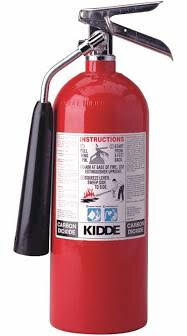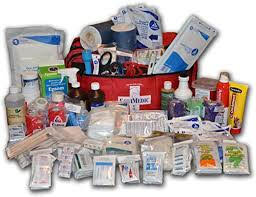Homer’s 50 Nifty Safety Tips for Horses and Their Humans
Some people say horses are accidents waiting to happen. We don’t mean to be difficult. We’re just curious and some of us are rather accident prone. In honor of National Animal Safety and Protection Month, I’ve gathered some tips covering barn and pasture safety as well as trailering – all to help you keep you and your equine friends out of as much trouble as possible. Welcome to Homer’s 50 Nifty Safety Tips.
Scope Out the Outdoors
1. Check turnout areas for hidden trash, gopher holes or broken fences.
2. Barbed wire is an absolute NO. No barbed wire fences. Ever.
3. Make sure gate chains aren’t too long.
4. If halters are left on during turnout, make sure they are breakaway halters.
5. Unused water tanks in fields and paddocks should be drained and spigots turned off. Eliminate sources of still water, like puddles, that tend to allow mosquitoes to breed.
No barbed wire fences. Ever.
Barn Safety
Make sure your farrier didn't accidentally leave a nail behind.
6. Make sure cement aisle ways are covered with rubber mats or other non-slip surface.
7. Sweep the area after the farrier’s visit to make sure there are no nails accidentally left behind. Make sure your farrier didn't accidentally leave a nail behind.
8. Remove the halter when the horse is in the stall.
9. Use a lead rope and halter at all times when leading horses.
10. Turn double-ended bucket snaps toward the wall to avoid protrusions.
11. All wiring should meet electrical codes, and all electrical wires should be covered, even if wires seem out of reach. We are good at reaching things we want! Is there a slack cord from the stall fan in view? This could become dangerous if a horse decides that cord may make a good snack. Hide it, tuck it in or cut PVC pipe in half to cover the cord and get it out of reach.
12. Cover windows and light bulbs with metal grills. Our curiosity can’t be curbed.
13. Check stall walls for splinters, sharp nails or protrusions.
14. Stall mats add padding to the floors. Mats should be urine proof or positioned for optimal drainage. A solid mat prevents hooves from tripping on overlapping sections.
15. Anti-casting strips and rails give us more leverage when getting up.
16. Cross-ties can be fatal if a horse pulls back, slips, or flips. Secure cross-ties with something breakable like baling twine or a quick-release snap.
A loop made out of baling twine attached to cross-ties can help prevent a scary cross-tie accident.
17. Bungee cords can seriously injure a horse or human should they break when a horse pulls back. I’ve heard a story about a horse losing his eye when the bungee cord snapped and hit his face. Ouch!
18. Keep a first-aid kit on hand for horses and riders. “The Horse” has a list of items necessary for horses and humans. Post a list of emergency contact numbers, including a poison control center.
19. After removing a halter, don’t leave it on the ground whether or not it’s attached to cross ties. It’s just too easy to get tangled in my feet—or yours.
20. Remove dust and cobwebs regularly. They can act like kindling in the case of a fire.
21. Make a fire evacuation plan.
22. Make sure you have working fire extinguishers. And, along with that. . .
23. No smoking in or near the barn. Ever.
Aisleway Safety
24. Contractor-grade water hoses avoid leaks that could make slippery aisleways.
25. Remove clutter in barn aisles. Tack trunks, wheelbarrows, muck buckets, trash bins, vacuum, rakes, pitchforks, brooms and shovels could end up being dangerous obstacles and make evacuation more difficult.
26. Open collapsible saddle holders only when tacking up.
Feed and Water Considerations
27. Hay handling can cause health problems if not done correctly. Hay lofts collect dust and can trap air beneath a low ceiling, so it is best to bring enough hay inside for one week, with another site (like a hay barn) used for bulk hay storage. This should be set away from the horse barn for fire safety.
28. Stack hay on pallets rather than on the floor to reduce moisture that could result in moldy hay.
29. Store grain, supplements and medications in locations inaccessible to horses if we manage to escape from our stalls.
30. Store grain in metal or hard plastic bins rather than in paper bags or wooden grain chests. All kind of rodents like our feed too. Who doesn't like "All the Single Ladies" and the Queen Bey?
31. Hay racks and hay bags can cause eye injury and we could get trapped while getting excited when eating. Feed at ground level, if possible, to allow natural nasal drainage and to minimize respiratory irritation.
32. Automatic waterers don’t allow you to see how much water your horse is drinking. Clean water sources at least weekly and inspect daily.
Biosecurity
33. To minimize spread of infectious disease, isolate all newcomers to the property in an area away from the resident herd, where there is no opportunity for direct contact, shared water or feed.
34. All new horses entering a farm should have up-to-date vaccination records and proof of a negative Coggins test within the past half year.
Trailering
35. Make sure your vehicle is appropriate to pull a trailer. Learn about the tongue weight of your trailer and make sure that your hitch can handle it. Then, check that your tow vehicle is able to tow a fully loaded trailer.
36. Be sure your trailer (and hitch) are safe. Check for floors that need to be replaced, cracked hitches, worn tires and axles that could break. Better yet, have a trailer repair professional examine your trailer, tires, wiring, wheel bearings, brakes, and hitch at least once a year or, if you haul regularly, twice a year.
37. Keep another first-aid kit in your truck or trailer. “The Horse” published an article outlining the steps to take to avoid a horse-hauling accident and what to do if you do have one. Chris Newton, DVM, of Rood & Riddle Equine Hospital in Lexington, Kentucky, shared his recommended items for a horsey first-aid kit. Also – know how to use everything in your first-aid kit. Don’t wait until your horse gets injured. You can make your own equine first aid kit or buy ones online.
38. Related to that, they also published “An Open Letter to Drivers Who Aren’t Horse People.”
39. Write down you vet’s phone number. Of course it’s in your phone, but what if your phone dies?
40. Hang your trailer hay net high off the ground. You don’t want your horse’s leg stuck in a hay net!
41. Practice loading and trailering with your horse ahead of time.
42. Don’t forget that you are transporting precious cargo. I’ve heard you humans singing at the top of your lungs to Beyoncé while driving and some forget they are hauling a horse. Remember: gradual turns, slower deceleration and more frequent stops.
43. Keep your horse’s head fully inside the trailer. Opening vents and windows to keep air flowing is important. It’s generally not a good idea to close your horse up in a box stall with no windows or doors, so it shouldn’t be any different for trailers. But, be smart about it.
44. When your trailer is moving, be sure a screen or grate covers windows or vents large enough and close enough for your horse to stick his head out. Yes, your horse might appear to enjoy the wind, but it’s not worth the risk that a close-passing vehicle, tree branch, or even smaller debris (twigs, leaves, bugs!) could cause. Don’t risk decapitating your horse! Once you’ve stopped and parked, it’s safer to remove screens and grates from windows.
45. If you wrap your horse’s legs, make sure the wraps are secure. Shipping boots and wraps can help protect your horse’s legs, but they can also cause issues if they slide down under a horse’s foot or come unwrapped. Be sure your horse is accustomed to wearing wraps before you load up. Make sure your horse is accustomed to shipping boots before you load him into the trailer.
46. Don’t tie your horse with a chain shank in place. Ouch!
47. Bailing twine is your friend. Whether tying your horse in a trailer or to a trailer, a loop of bailing twine or a quick release strap can ward off problems.
48. Make sure your horse stays hydrated over long trips.
49. Train your horse to walk quietly in and out of trailers or, ideally, load and unload themselves.
50. If it’s possible, don’t open the back door when your horse is still tied up front. This can be challenging due to some trailers’ designs, but it’s a safer method for everyone involved—your horse included.
I hope I reminded you of some important safety tips. What good ones did I forget?






